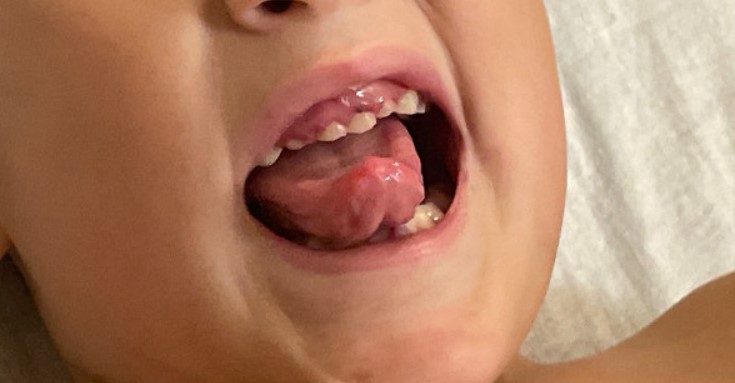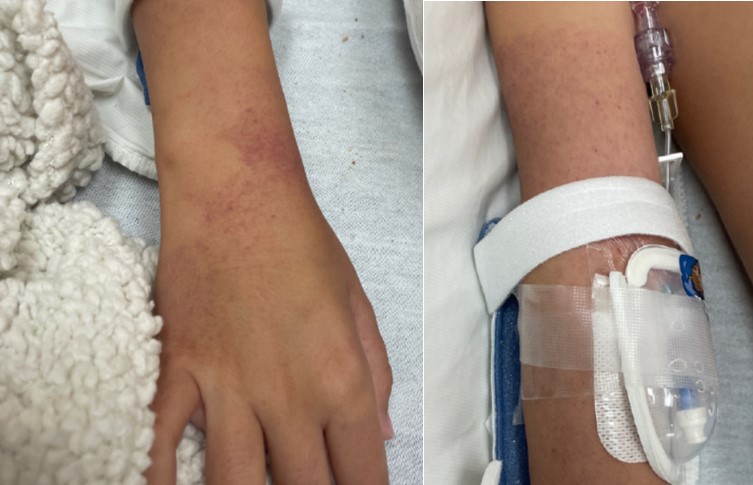Case Presentation: A 7-year-old boy with autism spectrum disorder, restricted diet, developmental delay, and iron deficiency anemia presented to the emergency department with decreased oral intake, gingivitis, and progressive refusal to walk over several weeks.Family noticed red and swollen gums one month prior to presentation. He then developed acute refusal to walk one week prior to presentation, and experienced pain with passive leg extension. Three days prior to presentation he had decreased oral intake and urine output prompting presentation. At baseline, his diet consisted of Ezekiel bread, flaxseed milk, and an occasional granola bar. He was evaluated by GI, hematology, orthopedics, and dentistry outpatient without a clear diagnosis for symptoms.Exam was notable for a thin boy with interactions consistent with diagnosis of autism and overgrown, slightly edematous, and violaceous gums without active bleeding consistent with gingivitis (Figure 1). He refused to bear weight with low muscle tone and non-localizing tenderness to palpation of lower extremities, although normal hip and knee range of motion. He subsequently developed petechiae on bilateral upper extremities (Figure 2) following IV placement.Lower extremity X-rays showed “mildly prominent growth lines within the metaphyses.” A broad vitamin work-up was sent and, given high clinical suspicion for scurvy, IV vitamin C was started. Subsequent labs revealed iron deficiency anemia and an undetectable vitamin C level (< 0.1mg/dL). Nasogastric tube was placed with initiation of tube feeds. He had gradual improvement in symptoms to the point he could stand on day 5 of admission and had resolution of petechia by day 7. Ultimately, a G-tube was placed for nutrition, and he continued on enteral vitamin C at discharge.
Discussion: This case of scurvy demonstrates how common system failures such as limited access to vital preventative care contributed to a rare presentation requiring hospitalization. He presented to several hospital systems and multiple outpatient providers (including hematology, GI, and primary care) for severely restricted diet and risk of nutritional deficiency in the two years prior to admission without recognition or unifying of multi-system involvement. Despite discussing G-tube for nutrition optimization, no follow up GI appointment was scheduled and no contact was documented by GI or PCP to help facilitate care, representing areas for system improvement. Furthermore, this family was referred to a feeding clinic; unfortunately, 18 months had passed, and he was still waiting to be seen due to preventative clinics not having adequate resources to serve the needs of our patient population. During admission, he was stable for discharge after 3-4 days of vitamin C and nutrition, however he remained admitted another 5 days to facilitate expedited placement of G-tube which otherwise would have been delayed several months. This represents a system failure, where hospital systems must keep children admitted longer than necessary to facilitate vital long-term care coordination, which further burdens the medical system and families.
Conclusions: Although scurvy is a rare diagnosis, common system failures such as long outpatient subspeciality wait times, failure to follow up with specialists, difficulty coordinating procedures, and prolonged length of stay were present and represent opportunities for improvement.


